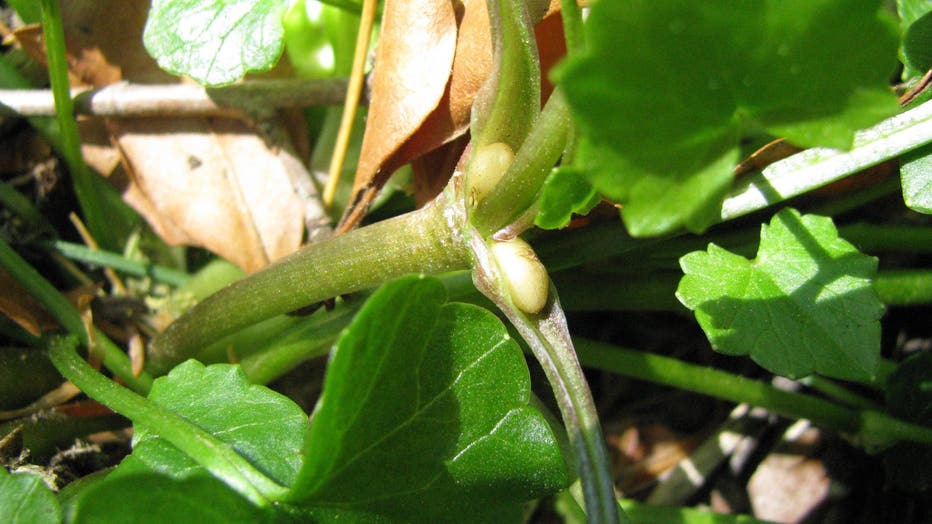Michigan adds invasive lesser celandine plant to state's watch list
Lesser celandine. Photo courtesy of DNR.
(FOX 2) - Say hello to Michigan's newest invasive plant to be added to the state's watch list for nonnative vegetation.
Lesser celandine can be identified by heart-shaped leaves and glossy yellow flowers. Like many invasive plants, it has multiple ways of spreading which makes it a threat to native plants that can't keep up with its growth.
While already established in parts of the Grand River watershed, officials are concerned it could be growing elsewhere in Michigan.
Lesser celandine is particularly tough to control because it sprouts early in the spring, flowers, and releases seeds, before dying and disappearing before summer even starts.
Originally brought to Michigan as a spring plant for private gardens, it is now on the minds of natural resource regulators who want to prevent its growth.
"With the prioritization afforded by the watch list, we're hoping reports by partners and the public can help us understand how far the invasion extends so we can make the best decisions about how to steward our resources – both financial and natural," said Katie Grzesiak, terrestrial invasive species coordinator with the Michigan Department of Natural Resources.
How does Lesser Celandine spread?
The invasive plant uses three methods for spreading: seeds, tubers, or bulbils.
While the seeds are released at the end of its growth cycle, the tubers act as underground stems that can also help the plant expand.
Bulbils are tiny bulblike structures where the leaf meets the stem.

The bulblike structures that help lesser celandine spread. Photo courtesy of Bugwood.org.
Identifying Lesser Celandine
The best time to report lesser celandine is in the early spring when it blooms yellow flowers.
Anyone who spies the plant is asked to report it through the Midwest invasive Species Information Network or on the app.
It looks similar to marsh-marigold, but the native plant species can grow much larger and lasts throughout the summer.
More information on identifying, reporting and preventing the introduction or spread of watch list species is available at Michigan.gov/Invasives/ID-Report/Watchlist.


